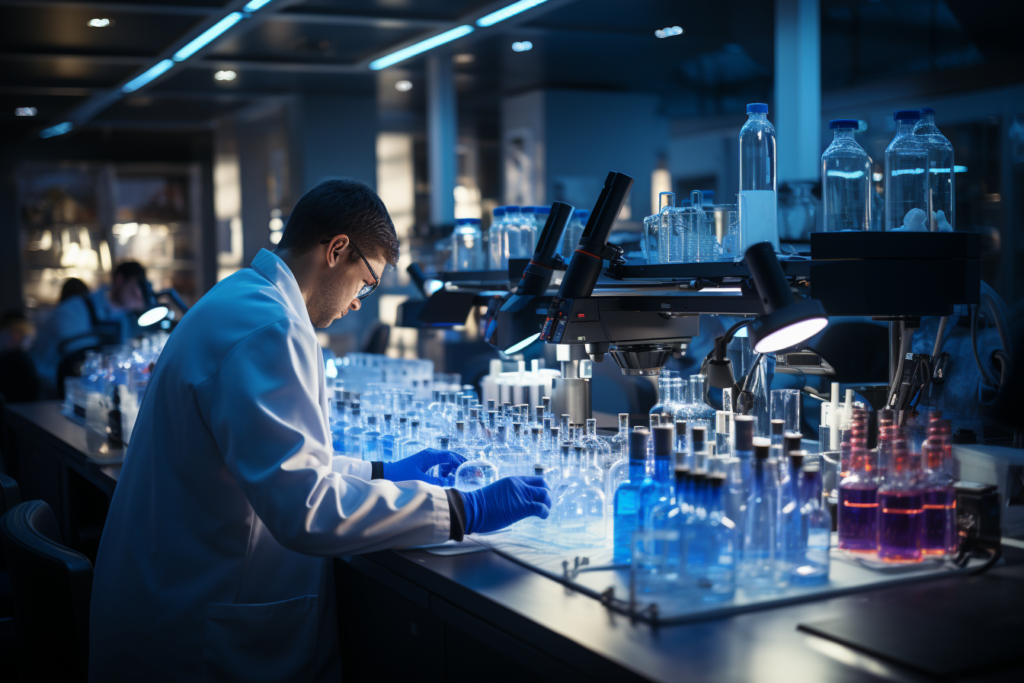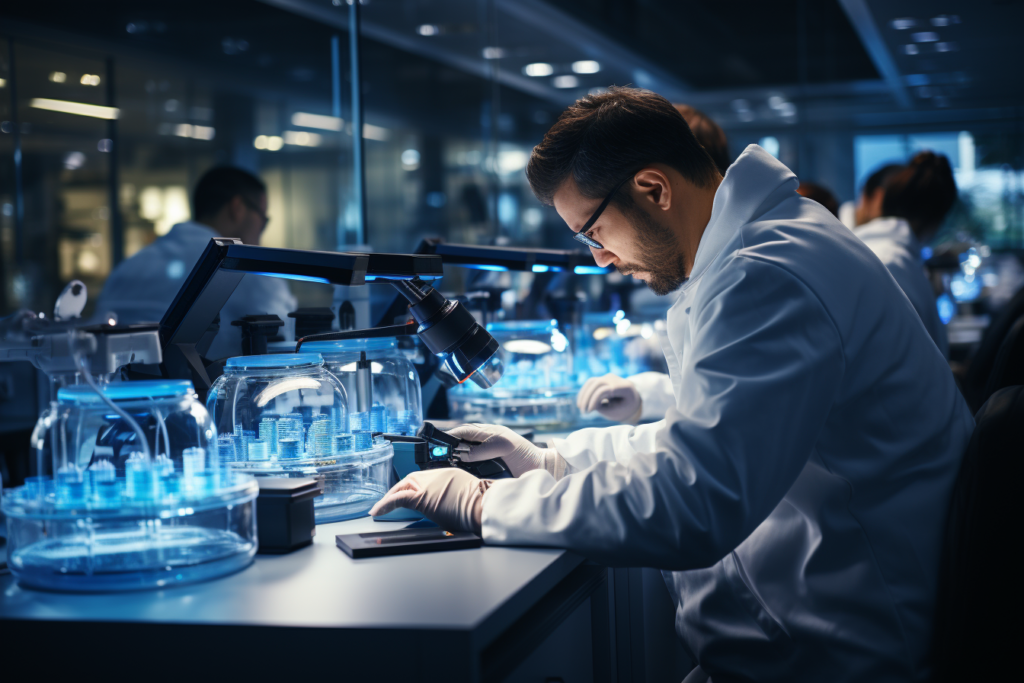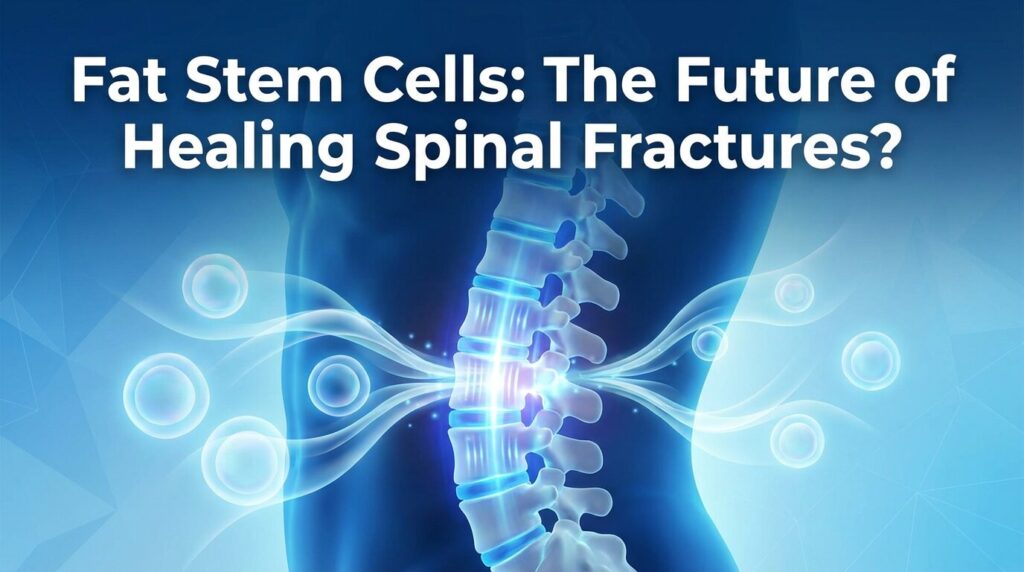Ever wondered about the incredible world of stem cells? Well, you’re in the right place. We’re about to embark on a journey that dives deep into the therapeutic potential of a specific type of stem cell – the adipose-derived stem cell. Imagine stem cells as the seeds in a garden.
Just as seeds can grow into various plants, stem cells have the potential to become various cell types. Now, not all seeds are the same, right? Similarly, not all stem cells are the same. There are mesenchymal stem cells, hematopoietic stem cells, induced pluripotent stem cells, and many more. But today, we’re focusing on the unsung hero of the stem cell world.
You might be thinking, “Adipose? Isn’t that just a fancy word for fat?” You’re spot on! Adipose-derived stem cells come from our fat tissue. Think of them as the gold hidden in the hills of our body. While they might sound new to you, they’ve been creating waves in the medical community due to their therapeutic potential.
But why are these cells so special? Well, unlike other stem cells, adipose-derived stem cells are relatively easy to extract. It’s like picking apples from a low-hanging branch instead of climbing to the top of the tree. Plus, they have a unique differentiation potential, which means they can transform into various cell types, including endothelial cells and even cancer cells.
We’re here to harness the power of these cells and explore how they can revolutionize the world of regenerative medicine. From healing wounds to repairing damaged heart tissue, the applications are vast and promising. So, buckle up as we delve into the fascinating world of adipose-derived stem cells and their role in the future of medicine.
Background on Adipose-Derived Stem Cells (ADSCs)
Alright, let’s get to know our star player a bit better: the adipose-derived stem cell. If stem cells were a football team, think of mesenchymal stem cells as the well-known quarterback. In contrast, our adipose-derived stem cells might be the underrated wide receiver who’s just as crucial to the game.

First things first, where do these cells come from? The name gives it away! They’re extracted from adipose tissue, which is essentially our body’s fat storage. It’s like finding a treasure trove of valuable coins in your old couch cushions. These cells are a subset of mesenchymal stem cells and are sometimes referred to as adipose stem cells or adipose tissue-derived stem cells.
Now, you might wonder, “Why not just use other stem cells?” Well, while bone marrow is a common source of mesenchymal stem cells, extracting them can be more invasive and painful. On the other hand, getting stem cells from adipose tissue is like taking a shortcut on a long journey. It’s quicker, less invasive, and offers a rich supply.
But it’s not just about quantity; it’s about quality too. Adipose-derived stem cells have a unique composition. They contain a mix of progenitor cells, stromal vascular fraction, and adipose-derived stromal cells. This cocktail of cells gives them a wide range of therapeutic applications.
And here’s the cherry on top: these cells have a high differentiation potential. Imagine a multi-talented artist who can sing, dance, and act. Similarly, these cells can transform into various cell types, from endothelial cells that line our blood vessels to smooth muscle cells.
In the grand scheme of things, understanding adipose-derived stem cells is like unlocking a new level in a video game. It opens up a world of possibilities, and we’re just scratching the surface!
Therapeutic Potential of ADSCs
So, we’ve established that adipose-derived stem cells are like the hidden gems in the vast world of stem cells. But what makes them the talk of the town in the medical community? Let’s explore!
Wound Healing and Tissue Regeneration
Imagine you have a torn piece of cloth. Instead of throwing it away, you patch it up. Similarly, adipose-derived stem cells act as nature’s patch. They play a pivotal role in promoting wound healing. It’s like having a team of tiny construction workers rushing to a site to repair damage. Recent studies have shown promising outcomes, especially when comparing them to other stem cells derived from different sources.
Orthopedic Applications
Ever seen a potter mold clay into beautiful shapes? That’s somewhat how adipose-derived stem cells work in bone and cartilage repair. They’ve shown significant benefits in treating conditions like osteoarthritis. It’s like using a magic potion to rejuvenate old, worn-out joints.
Cardiovascular Repair
The heart, our body’s tireless pump, sometimes faces wear and tear. Adipose-derived stem cells come to the rescue, especially after events like a myocardial infarction. Think of them as the backup generators when the main power source faces issues.
Neurological Applications
The brain, our command center, isn’t immune to diseases. Conditions like Parkinson’s and Alzheimer’s have long puzzled scientists. But guess what? Adipose-derived stem cells are showing potential in these areas too. It’s like finding a ray of hope in a long, dark tunnel.
Autoimmune Diseases
Sometimes, our body’s defense system gets a bit too overzealous and starts attacking itself. In diseases like rheumatoid arthritis and lupus, adipose-derived stem cells act like the peacekeepers, helping to modulate the immune response.
Now, while all this sounds fantastic, it’s essential to remember that the world of stem cells is vast and ever-evolving. The therapeutic potential of adipose-derived stem cells is like a new book series. We’ve read the first few chapters, and they’re thrilling, but there’s so much more to discover!
Technological Advancements in ADSC Therapy
The world of stem cells is like the tech industry – always evolving, always innovating. And when it comes to adipose-derived stem cells, the advancements are nothing short of groundbreaking. Let’s take a look at some of the game-changers in this field.

Innovations in Extraction and Purification
Remember the gold rush? Miners had to sift through tons of dirt to find tiny gold nuggets. Similarly, extracting adipose-derived stem cells used to be a complex process. But thanks to modern techniques, we can now extract these cells more efficiently, much like using a metal detector to find gold!
Advancements in In-Vitro Expansion
Imagine if you could take a single seed and grow an entire forest. That’s the magic of in-vitro expansion. We can now take a small sample of adipose-derived stem cells and multiply them in a lab setting. It’s like having a stem cell factory, producing cells ready for therapeutic application.
3D Bioprinting and Tissue Engineering Using ADSCs
3D printing has revolutionized industries, and the world of stem cells is no exception. Using adipose-derived stem cells, scientists can now ‘print’ tissue structures. Think of it as crafting a sculpture, layer by layer, but with living cells. This has massive potential, especially for stem cell transplantation and regenerative medicine.
Harnessing the Secretome of Adipose-Derived Stem Cells
The secretome of adipose-derived stem cells is like the secret sauce in a recipe. It’s a mix of factors and proteins these cells release, which can have therapeutic effects. By understanding and harnessing the secretome of adipose-derived stem cells, we’re opening doors to new treatment avenues.
The beauty of science is that it never stands still. And as we continue to harness the full potential of adipose-derived stem cells, who knows what other marvels await us in the future?
Safety and Ethical Considerations
Navigating the world of stem cells is like sailing on uncharted waters. While the potential rewards are immense, there are also risks and ethical dilemmas to consider. When it comes to adipose-derived stem cells, we’re committed to ensuring both safety and ethical integrity. Let’s break down some of the key considerations.
- Potential Risks and Side Effects: Like any new technology or medicine, using adipose-derived stem cells comes with its set of challenges. Think of it as trying out a new recipe – sometimes, it might not turn out as expected. There have been concerns about how these cells might behave once introduced into the body, potential reactions, or even the risk of cancer cell formation. It’s crucial to approach these therapies with caution, ensuring rigorous testing and monitoring.
- Ethical Concerns: The stem cell debate has always been a hot topic. While adipose-derived stem cells sidestep some of the controversies (since they’re derived from adult tissues), there are still ethical questions to ponder. For instance, ensuring informed consent from donors and maintaining transparency in research are paramount.
- Regulatory Guidelines and Standards: Just as traffic rules ensure safety on the roads, the stem cell world needs regulations. Various bodies worldwide have set guidelines for stem cell-based therapies, ensuring that the therapeutic application of adipose-derived stem cells meets the highest safety and efficacy standards.
- Autologous vs. Allogenic Use: Here’s a bit of jargon for you: “autologous” means using one’s own cells, while “allogenic” refers to using cells from a donor. Both approaches have their pros and cons. Autologous stem cell therapies, like using one’s own adipose-derived stem cells, reduce the risk of immune rejection. However, allogenic therapies can be more accessible and ready-to-use.
Navigating the stem cell landscape requires a delicate balance of optimism and caution. By addressing these safety and ethical considerations head-on, we aim to harness the therapeutic potential of adipose-derived stem cells responsibly and effectively.
Future Prospects
The journey of stem cells in medicine is like a gripping novel; each chapter reveals new twists and turns. And when it comes to adipose-derived stem cells, we’re on the brink of some exciting new chapters. So, what’s on the horizon?

New Areas of Research and Clinical Applications
Imagine a Swiss Army knife with endless attachments. That’s how versatile adipose-derived stem cells are. Researchers are continually exploring new avenues, from treating autoimmune diseases to even combating certain types of cancer cells. The sky’s the limit!
Personalized Medicine
Imagine if your medication was tailored just for you, like a bespoke suit. That’s the promise of personalized medicine. By understanding the unique characteristics of adipose-derived stem cells, we can develop treatments that are customized to individual needs.
Collaborative Efforts
They say it takes a village to raise a child. Similarly, it takes a collaborative effort of researchers, clinicians, and the industry to fully harness the therapeutic potential of adipose-derived stem cells. By working together, we’re not just adding chapters to the book; we’re writing whole new volumes.
Technological Synergy
Imagine combining the power of adipose-derived stem cells with other groundbreaking technologies like AI and machine learning. It’s like adding rocket fuel to a car; the possibilities for acceleration are mind-boggling.
Ethical and Regulatory Evolution
As we advance, so will the ethical and regulatory landscape. It’s like updating the rulebook as the game evolves, ensuring that we’re always on the right path as we explore the full potential of adipose-derived stem cells.
The future is a canvas, and adipose-derived stem cells are one of the many vibrant colors we have at our disposal. By continuing to explore, research, and collaborate, we’re not just harnessing the full potential of these cells; we’re opening doors to a future filled with medical marvels.
FAQ
Q: What are adipose-derived stem cells?
A: Adipose-derived stem cells (ADSCs) are a type of adult stem cell that are found in adipose tissue, or fat tissue, of the human body.
Q: What is the therapeutic potential of adipose-derived stem cells?
A: Adipose-derived stem cells have a wide range of therapeutic applications. They can differentiate into various cell types and have the potential to repair and regenerate damaged tissues and organs.
Q: How are adipose-derived stem cells obtained?
A: Adipose-derived stem cells can be obtained through a process called liposuction, where a small amount of fat tissue is surgically removed from the patient’s body.
Q: What are the advantages of using adipose-derived stem cells?
A: Adipose-derived stem cells have several advantages over other types of stem cells. They are abundant in adipose tissue and can be easily isolated in large quantities. They also have a higher proliferative capacity and are less likely to trigger immune rejection compared to other types of stem cells.
Q: Can adipose-derived stem cells be used for the treatment of diseases?
A: Yes, adipose-derived stem cells have been used in various therapeutic applications. They have shown promise in the treatment of conditions such as osteoarthritis, heart disease, neurodegenerative disorders, and wound healing.
Q: Are adipose-derived stem cells safe to use in medical treatments?
A: Adipose-derived stem cell therapies have been generally considered safe. However, like any medical procedure, there are potential risks and side effects that need to be carefully evaluated and monitored.
Q: How do adipose-derived stem cells improve tissue regeneration?
A: Adipose-derived stem cells can secrete various growth factors and cytokines that promote tissue regeneration and repair. They can also differentiate into specific cell types needed for tissue regeneration.
Q: Can adipose-derived stem cells be cultured in vitro?
A: Yes, adipose-derived stem cells can be cultured and expanded in the laboratory. This allows researchers to generate a large number of cells for experimental purposes.
Q: What is the difference between adipose-derived stem cells and bone marrow-derived stem cells?
A: Adipose-derived stem cells are obtained from fat tissue, while bone marrow-derived stem cells are obtained from the bone marrow. Both types of stem cells have similar properties and therapeutic potential, but adipose-derived stem cells are more easily accessible and can be obtained in larger quantities.
Q: Can adipose-derived stem cells be used in stem cell-based therapies?
A: Yes, adipose-derived stem cells are commonly used in stem cell-based therapies. They have been extensively studied for their therapeutic potential and have shown promising results in various preclinical and clinical studies.
Conclusion
And there you have it, a glimpse into the remarkable world of adipose-derived stem cells! From their origins in our body’s fat tissue to their role in healing wounds, repairing hearts, and even combating neurological challenges, these cells are like the unsung heroes of regenerative medicine.
As we bid farewell, remember that we’re just scratching the surface of what these cells can achieve. The story of adipose-derived stem cells is still unfolding, with new chapters being written by researchers, clinicians, and innovators around the globe. Each study, each discovery, and each breakthrough adds to the grand narrative of medical progress.
But as we look ahead, let’s not forget the importance of responsible research, rigorous testing, and ethical considerations. The potential is immense, but so are the responsibilities that come with it.
So, whether you’re a curious reader or a passionate researcher, know that you’re part of a journey that’s shaping the future of medicine. Together, we’re harnessing the therapeutic potential of adipose-derived stem cells, painting a canvas of hope, healing, and endless possibilities.
Here’s to a future where science and humanity walk hand in hand, transforming lives one stem cell at a time.


